Lab of the Month – The Kiessling Lab
The Lab
Led by Professor Laura Kiessling at MIT, the Kiessling lab has a passion for carbohydrates — the biomolecules coating every cell on Earth. This coat, termed the glycocalyx, serves as a critical conduit of information.
Using chemical biology, the Kiessling lab interrogates ways in which the glycocalyx enables microbes to escape host immune recognition. The group harnesses synthetic chemistry, molecular dynamics simulations, molecular and cell biology, as well as immunology to unpack the importance of glycan-protein interactions at the forefront of many diseases.
The People
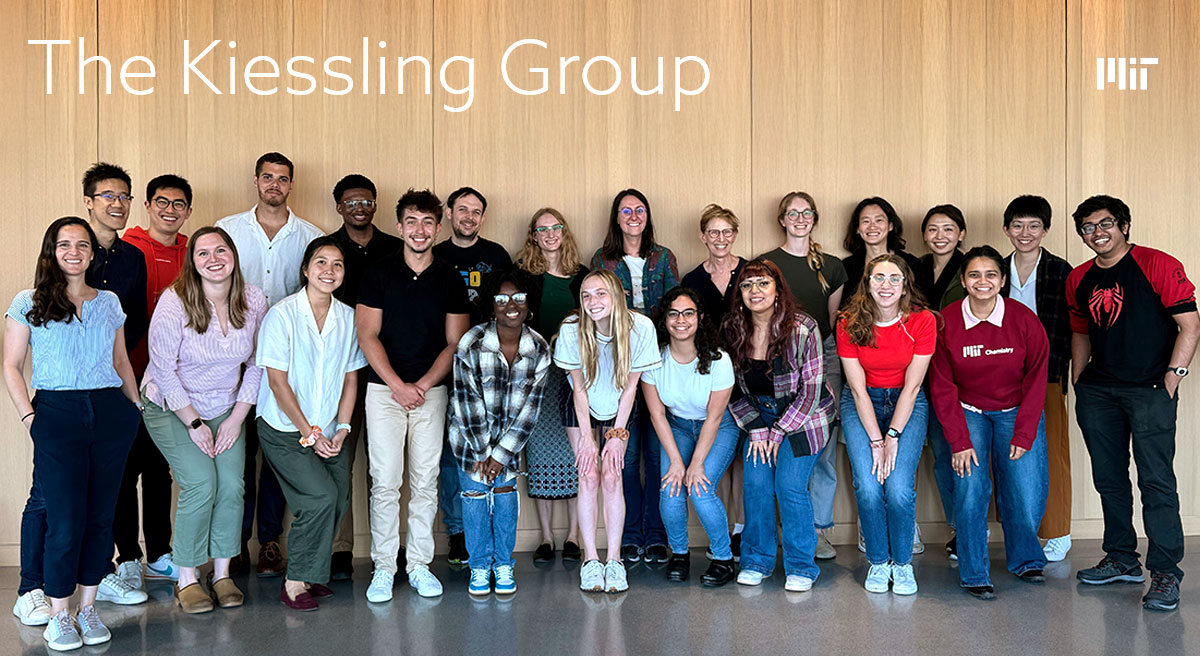
Back row, left to right: Chi-Wang Ma, Shiwei Wang, Alan Carter, Gerard Porter, Teddy Warner, Hallie Trial, Amanda Peiffer, Laura Kiessling, Carolyn Barnes, Sunhee Bae, So Young Lee, Jenny Yao, Ankit Basak.
Bottom row, left to right: Carolina Ortiz Cordero, Jill Alty, Melanie Halim, Phillip Ipock, Ekua Beneman, Jessie Ille-Bunn, Alexx Sosa Guir, Marissa Sulema Vera, Stephanie Smelyansky, Aditi Dixit.
The Kiessling lab includes undergraduate and graduate students, as well as post-doctoral researchers, who together span across fields of synthetic and polymer chemistry, molecular biology, immunology, and infectious disease. The breadth of expertise promotes interdisciplinary research and provides learning opportunities to everyone, a sentiment shared across lab members. Jenny Yao, a first year graduate student in an MD/Ph.D. program, says, “It’s a really creative and collaborative lab. I think it balances nicely being able to tackle very basic science questions while also having a very translational lens.” Jessie Ille-Bunn, a third year graduate student, agrees: “We have truly diverse skill sets and knowledge bases and really kind co-workers. Having such nice and smart people to work with really makes for an incredible experience.”
Lab members cultivate supportive relationships with their coworkers. A major way the lab stays close? Coffee runs! Ekua Beneman, a second year graduate student, says, “Grad school is about being there for each other… With coffee!”
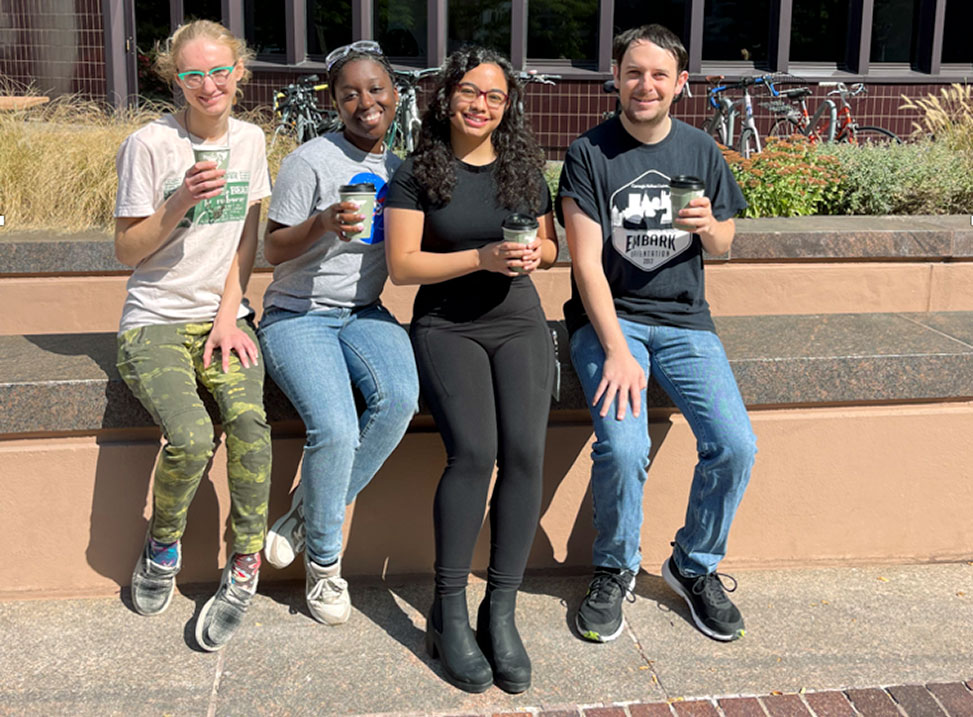
A lab coffee run is a must for grad students! From left to right: Hallie Trial, Ekua Beneman, Alexx Sosa Guir, and Teddy Warner.
Diverse skill sets lead to collaboration and learning. Hallie Trial, a third year graduate student, says, “It’s cool to have the freedom to work on a very diverse set of biological problems, from proteins to sugars to everything in between.” Dr. Jill Alty, a postdoc in the group, says, “That’s the good thing about this group – you can always learn something new from a coworker.” This is further echoed by graduate student So Young Lee, “You can’t always figure out all aspects of your project, so you end up working with people with other expertise to experience what it’s like to be on a cross-functional team. You can also experience close collaborations with other labs.”
Students in the group are all grateful for Laura’s authentic excitement for the research. As one member stated, “Laura is enthusiastic about science and cultivates independence. She gets very excited about challenges and results.”

Lab outings also provide opportunities for group bonding. Ice skating has become a Kiessling group tradition. Some graduate students and postdocs have their first experiences on the ice at the group event, while others who grew up figure skating or playing ice hockey provide tips.
The Research
Peptides in Infection
The Kiessling lab uses its carbohydrate expertise to study pathogenic infections. Polymyxins, a class of cyclic peptide antibiotics, are leveraged in the lab to target pathogens like Klebsiella pneumoniae and Pseudomonas aeruginosa. The lab is also working towards understanding key pathogenic peptides that act as immune antigens, such as the ones loaded onto Major Histocompatibility Complex II on immune cells. Peptides can be delivered in combination with immune-targeting sugars or haptens to direct and enhance the immune response.1,2
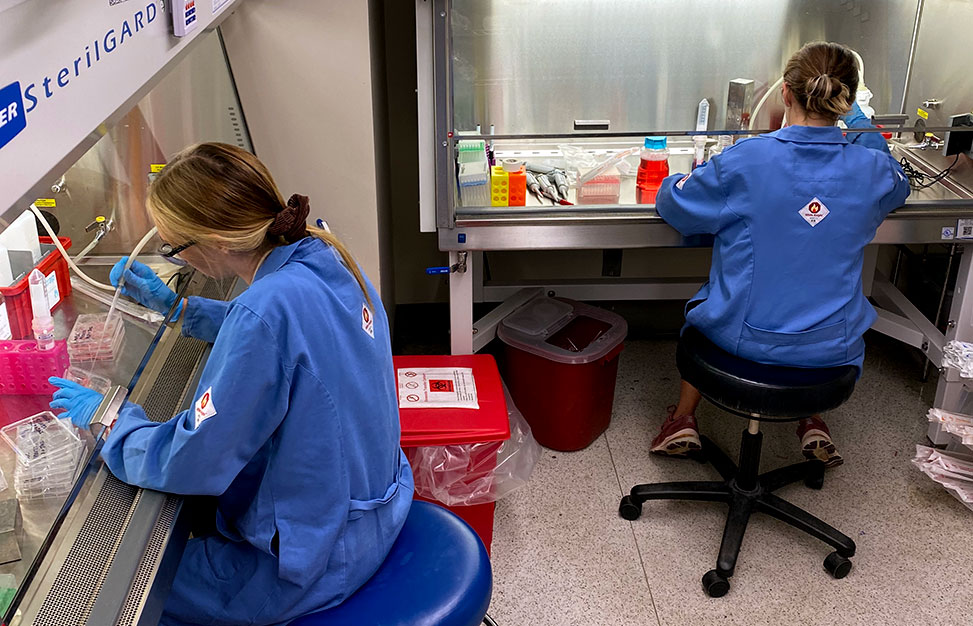
Graduate students Jessie Ille-Bunn, left, and Stephanie Smelyansky, isolate immune cells from fresh whole blood to study pathogenic infections.
Polypeptide Labeling
Small molecule covalent protein labeling has found applications in biology and medicine ranging from creating new antibody drug conjugates to understanding protein structure and function. While strategies have been developed for labeling amines in polypeptides over other nucleophilic protein functional groups, such as alcohols and thiols, amine-selective electrophiles traditionally have high reactivity.
This makes it challenging to control the regioselectivity of the reaction and modify only one desired lysine residue near the binding site for a reactive probe. Selective labeling is important for many applications, such as ligand and binding pocket discovery. Our lab has identified squarates as effective amine-reactive handles for regioselective lysine modification on proteins.3
We have characterized the kinetics of “off-target” reactivity for squarates and other common lysine-reactive handles, such as dichlorotriazines and succinimidyl esters, showing that the reduced reaction off target reaction rate due to the milder electrophilicity of squarates enhances labeling selectivity.3
Fluorescent D-Amino Acids
Proteins called transpeptidases can incorporate Fluorescent D-Amino Acids, FDAAs, into the bacterial cell wall, and scientists can use this to label bacteria. Teddy Warner, a fourth year graduate student, designed a library of FDAAs to differentially label bacterial species. These differences in incorporation can be used to diagnose infections and separate commonly confused species.
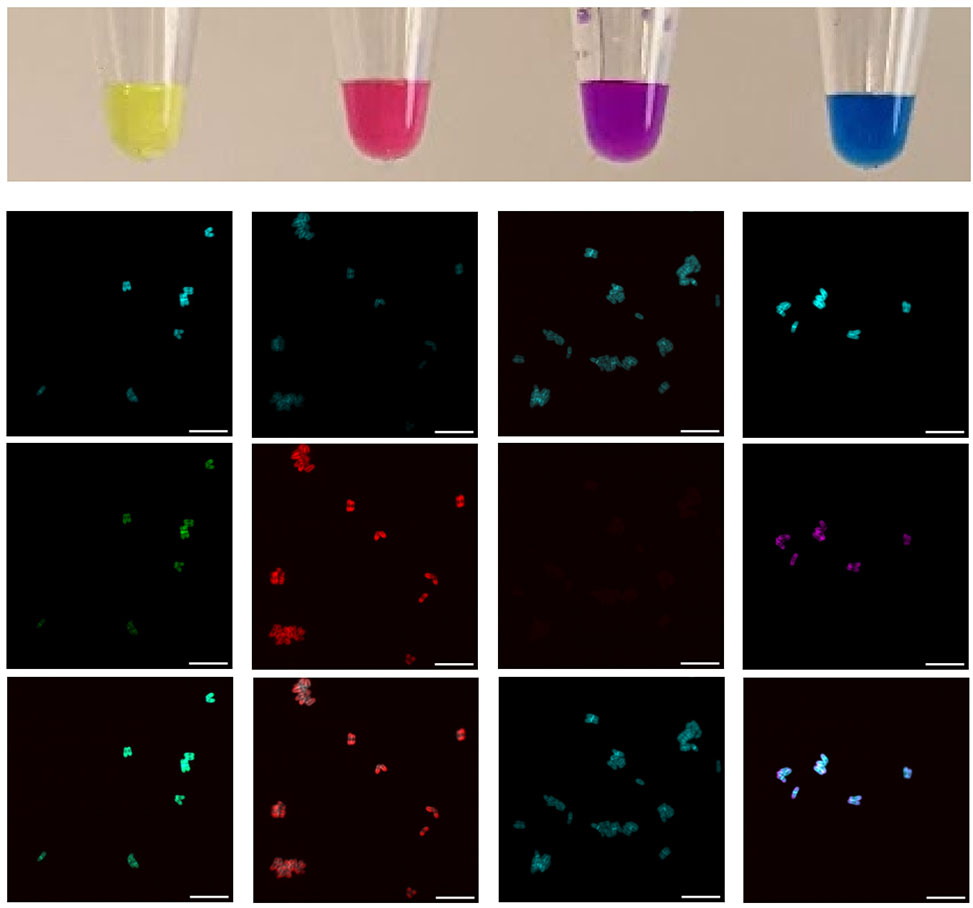
Selective metabolic incorporation of FDAAs differentiates bacterial species.
For more information about our lab’s exciting research on biomolecules from proteins to sugars, visit our lab website
.
Publication Information
-
Lensch, V., A. Gabba, R. Hincapie, S. H. Bhagchandani, A. Basak, M. M. Alam, D. J. Irvine, A. K. Shalek, J. A. Johnson, M. G. Finn, and L. L. Kiessling. “Glycan-Costumed Virus-like Particles Promote Type 1 Anti-Tumor Immunity.” bioRxiv, 18 Jan. 2024, https://doi.org/10.1101/2024.01.18.575711.
-
Bennett, N. R., C. M. Jarvis, M. M. Alam, D. B. Zwick, J. M. Olson, H. V.-T. Nguyen, J. A. Johnson, M. E. Cook, and L. L. Kiessling. “Modular Polymer Antigens To Optimize Immunity.” Biomacromolecules, vol. 20, no. 12, 2019, pp. 4370–4379, https://doi.org/10.1021/acs.biomac.9b01049.
-
Taylor, K. I., J. S. Ho, H. O. Trial, A. W. Carter, and L. L. Kiessling. “Assessing Squarates as Amine-Reactive Probes.” Journal of the American Chemical Society, 2023, https://doi.org/10.1021/jacs.2c05691.
-
Keys, A., D. Kastner, L. Kiessling, and H. Kulik. “The Energetic Landscape of CH–Pi Interactions in Protein–Carbohydrate Binding.” ChemRxiv, 9 Aug. 2024, https://doi.org/10.26434/chemrxiv-2024-k3bw2.
Laura L. Kiessling: A Trailblazer in Peptide Science
Professor Laura L. Kiessling is widely recognized for her pioneering research in chemical biology, particularly in carbohydrate-protein interactions, cell surface recognition, and the synthesis of complex biomolecules. Her contributions have significantly advanced the understanding of the intricate relationships between peptides, glycans, and their biological functions.
Background and Academic Journey
Kiessling began her academic career with a Bachelor of Science degree in Chemistry from MIT, where she conducted undergraduate research in organic synthesis. She then pursued her Ph.D. at Yale University, focusing on chemical synthesis and cellular interactions. Her postdoctoral work at the California Institute of Technology further refined her expertise in chemical biology. After joining the faculty at the University of Wisconsin–Madison, she became a distinguished professor, directing the Keck Center for Chemical Genomics.
In 2017, Kiessling returned to MIT as the Novartis Professor of Chemistry. Her contributions to the field have been recognized through her membership in the American Academy of Arts & Sciences, the National Academy of Sciences, and other prestigious organizations. As the founding Editor-in-Chief of ACS Chemical Biology, she has influenced the direction of research in chemical biology.
Current Research Focus
Kiessling’s research focuses on the roles of carbohydrates, specifically glycans, in cellular processes and their interactions with peptides and proteins. By exploring glycan-peptide interactions, her work provides fundamental insights into immune responses and microbial recognition. This research has implications for therapeutic developments, including anti-cancer treatments, wound healing, and vaccine design.
Her lab adopts chemical biology techniques to investigate how cell surface glycans affect cellular behavior. Recent studies have targeted glycan-binding proteins, such as lectins, to uncover the mechanisms by which the immune system recognizes and responds to various pathogens.
Connecting Recent Works
In 2023, Kiessling and her team published “Lectin-Seq: A method to profile lectin-microbe interactions in native communities” in Science Advances.1 This paper introduces Lectin-Seq, a method developed to study how human lectins interact with diverse microbial species in the human microbiome. The research reveals substantial differences in how lectins, such as mannose-binding lectin, MBL, and intelectin-1, hItln1, recognize microbial communities. The findings provide critical insights into host-microbe interactions and highlight the complexity of glycobiology.
In 2022, the Kiessling lab published “Bifunctional Peptide that Anneals to Damaged Collagen and Clusters TGF-β Receptors Enhances Wound Healing” in ACS Chemical Biology.2 This study focuses on a synthetic peptide that binds to damaged collagen and clusters TGF-β receptors, promoting tissue repair. By combining chemical synthesis with biological application, this research opens new avenues for therapeutic interventions in wound healing.
In addition to these publications, Kiessling presented the keynote lecture, “Peptide-Glycan Interactions in Immunity,” at the 2023 American Peptide Society Symposium in Scottsdale, AZ.3 This lecture highlighted her team’s ongoing work on how peptide-glycan conjugates can influence immune responses, particularly in the context of anti-cancer immunity. The research delves into the design features of these conjugates and explores the mechanisms underlying their activity against tumors, addressing critical challenges in immunotherapy.
Professor Laura L. Kiessling’s work continues to influence peptide science by uncovering the complex interactions between glycans and peptides. Through innovative methodologies like Lectin-Seq and research into peptide-based therapeutics, her studies provide valuable insights for drug design, vaccine development, and treatments for various diseases.
1 Science Advances, 28 Jul 2023, Vol 9, Issue 30, DOI: 10.1126/sciadv.add8766
2 ACS Chem. Biol., 2022, 17, 2, 314–321
3 Laura L. Kiessling, Massachusetts Institute of Technology. “Peptide-Glycan Interactions in Immunity.” *Opening Plenary Keynote Lecture*, Symposium on Peptide Science, 24 June 2023, 6:10 pm – 7:00 pm.
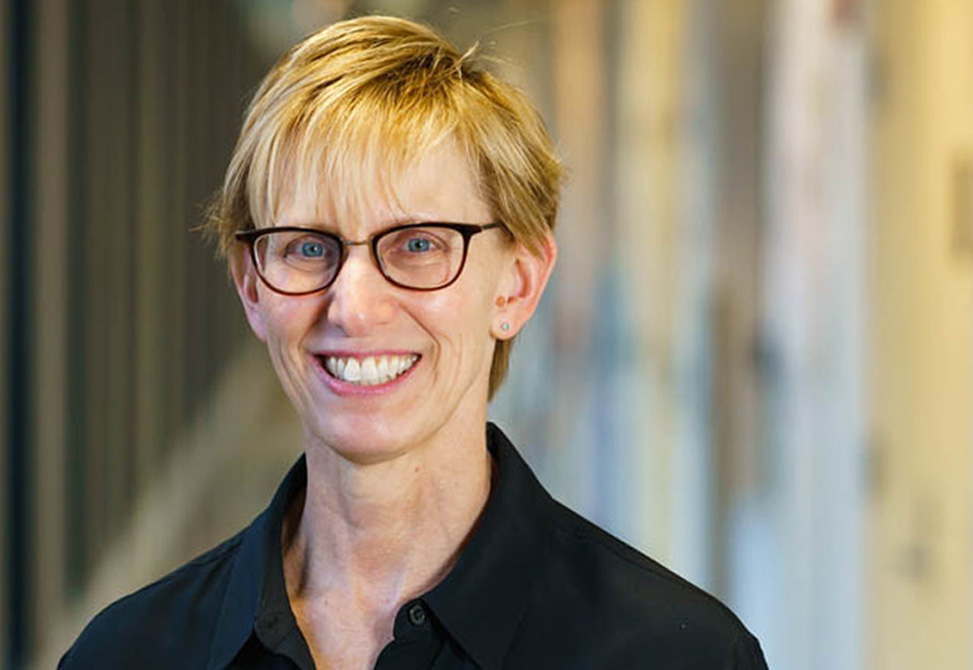
Laura Kiessling
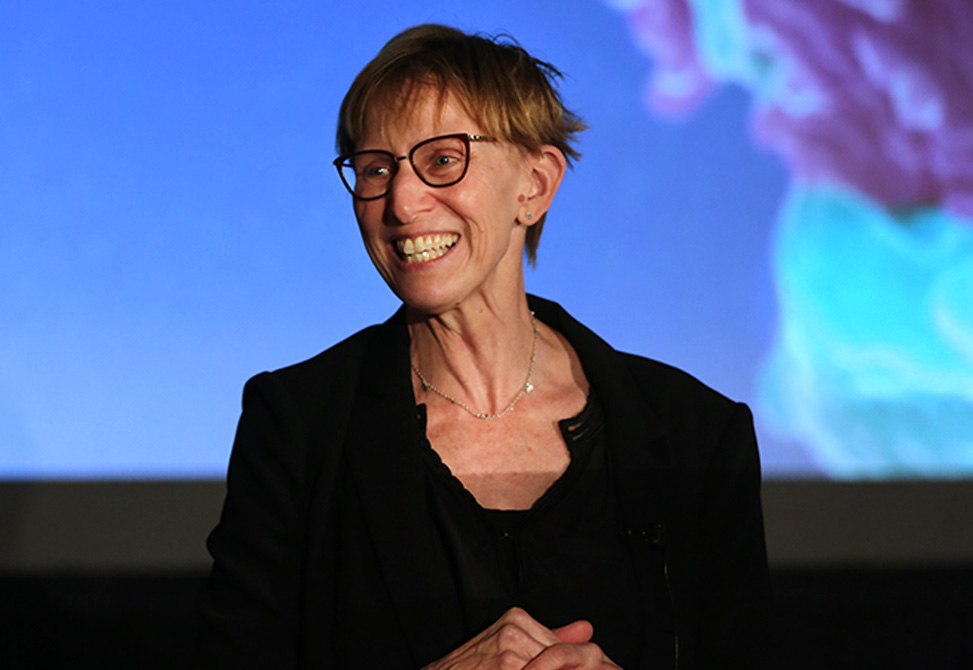
Laura Kiessling at APS 2023, Scottsdale, AZ

